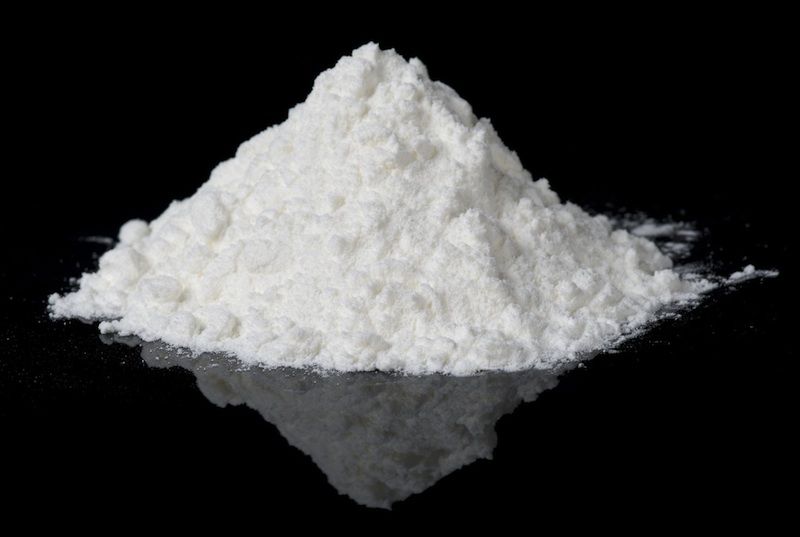Latest Designer Drug Called 'Smiles' Linked to Teen Deaths

Several teenagers’ deaths have law enforcement officials concerned about the next in a long line of illegal synthetic drugs: 2C-I, also known as "Smiles."
The drug, a hallucinogen, has been linked to two deaths in East Grand Forks, North Dakota, though little is known about this drug's dangers. Other synthetic drugs, including K2 or "fake weed," have caused problems by proliferating before being made illegal.
"There is hardly any research at all in the scientific literature on these things, even in animals, much less any sort of formal safety evaluation in humans," said Matthew Johnson, a professor of behavioral pharmacology at Johns Hopkins University.
A new high
2C-I is part of the 2C family of drugs, a group of closely related molecules that have psychedelic effects. Along with the other 2Cs, 2C-I was discovered by chemist and synthetic-drug guru Alexander Shulgin, who published the formulas of psychoactive drugs in his book "PiHKAL: A Chemical Love Story" (Transform Press, 1991). As of July 2012, the Drug Enforcement Administration classifies 2C-I as a Schedule I controlled substance, making it illegal to manufacture, buy, sell or possess the drug. [Trippy Tales: The History of 8 Hallucinogens]
Usually sold in powder form, 2C-I can also be taken as a tablet. Users often mix the powder form with a stabilizing substance, such as chocolate or candy, before ingesting. The drug’s effects include auditory and visual hallucinations, along with feelings of giddiness, relaxation and empathy.
"[M]y conversations were extremely clear and insightful,” wrote one 2C-I user on erowid.org, which hosts an online version of Shulgin's book. “The degree of honesty was incredible."
Sign up for the Live Science daily newsletter now
Get the world’s most fascinating discoveries delivered straight to your inbox.
But the drug has nasty side effects, too, as the case of the East Grand Forks teenagers attests. According to news reports, a 17-year-old went to a McDonald's in June after taking 2C-I mixed with melted chocolate given to him by an 18-year-old friend. The younger teenager began hyperventilating and hitting his head against the ground. His friends took him home, but several hours later, he stopped breathing. His 18-year-old companion has been charged with third-degree murder and second-degree manslaughter.
The night before, an 18-year-old was found dead in the same town, reportedly of a similar overdose, prompting police to warn about a tainted batch of 2C-I.
"2C-I is related to a class of drugs called phenylethylamines, which in turn are related to amphetamines," said Rudy Richardson, a toxicologist at the University of Michigan. Amphetamines (best known in the illegal drug market from methamphetamine) increase heart rate and can cause the heart to beat out of rhythm, Richardson told LiveScience. Those heart arrhythmias, in turn, can be fatal.
More commonly occurring unpleasant side effects of 2C-I include nausea and vomiting, according to online, anecdotal reports. Some users experience "bad trips," which can include terrifying hallucinations and feelings of fear and panic.
Not your average hallucinogen
2C-I's hallucinogenic effects may fool some users into thinking it is difficult to overdose on the drug, Johnson told LiveScience. Classic hallucinogens, such as LSD and psilocybin, or "magic mushrooms," are unusual in that they don't typically cause immediate bodily harm, he said — though they can be dangerous to people with psychotic tendencies and those who walk into traffic or off of buildings while under the influence, he added.
Like LSD and psilocybin, 2C drugs cause hallucinogens by interfering with the brain's serotonin system, Johnson said. But drugs in the 2C class differ in having stimulant effects. That means that 2C drugs can kill in the same ways as meth and other uppers, including by causing strokes, he said.
Adding to the danger, users may not always know what they're getting. In 2009, for example, two people died in the U.S. and in Denmark after taking what they believed to be a 2C drug called 2C-B-fly. Instead, it was likely a similar, but much stronger drug called bromo-dragonfly.
"Until they're tested, you really don't know what you're buying," DEA spokesperson Michael Rothermund told LiveScience.
There are no national statistics on 2C-I use, Rothermund said, and it's not clear how widespread the drug really is. But Johnson warned that synthetic drugs should be considered seriously.
"I just want to caution people to be careful and not assume all drugs are the same — even if they have similar effects," he said.
Follow Stephanie Pappas on Twitter @sipappas or LiveScience @livescience. We're also on Facebook & Google+.

Stephanie Pappas is a contributing writer for Live Science, covering topics ranging from geoscience to archaeology to the human brain and behavior. She was previously a senior writer for Live Science but is now a freelancer based in Denver, Colorado, and regularly contributes to Scientific American and The Monitor, the monthly magazine of the American Psychological Association. Stephanie received a bachelor's degree in psychology from the University of South Carolina and a graduate certificate in science communication from the University of California, Santa Cruz.
Most Popular

